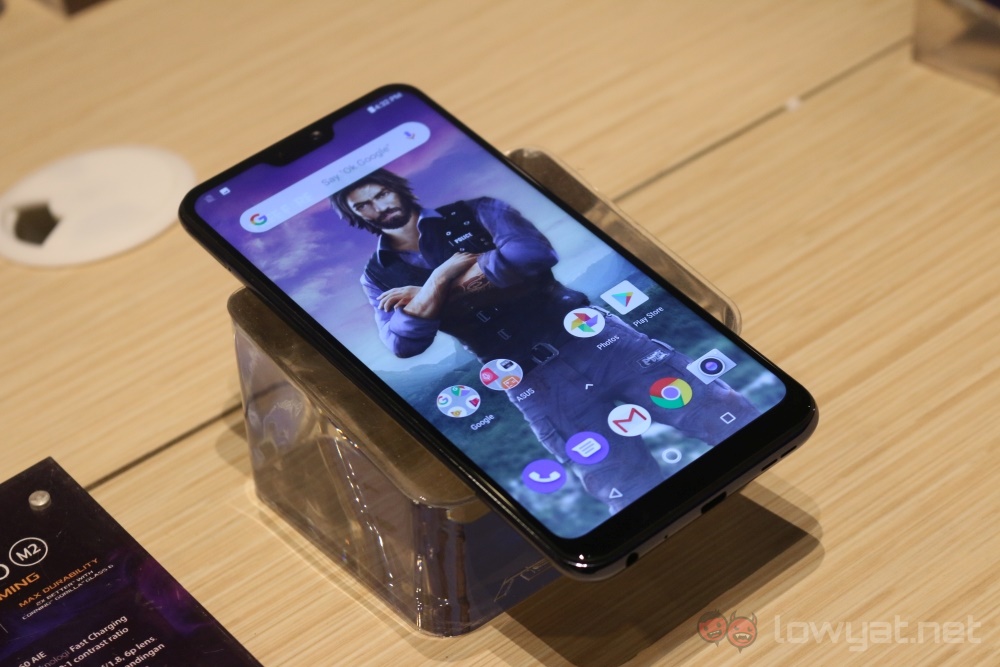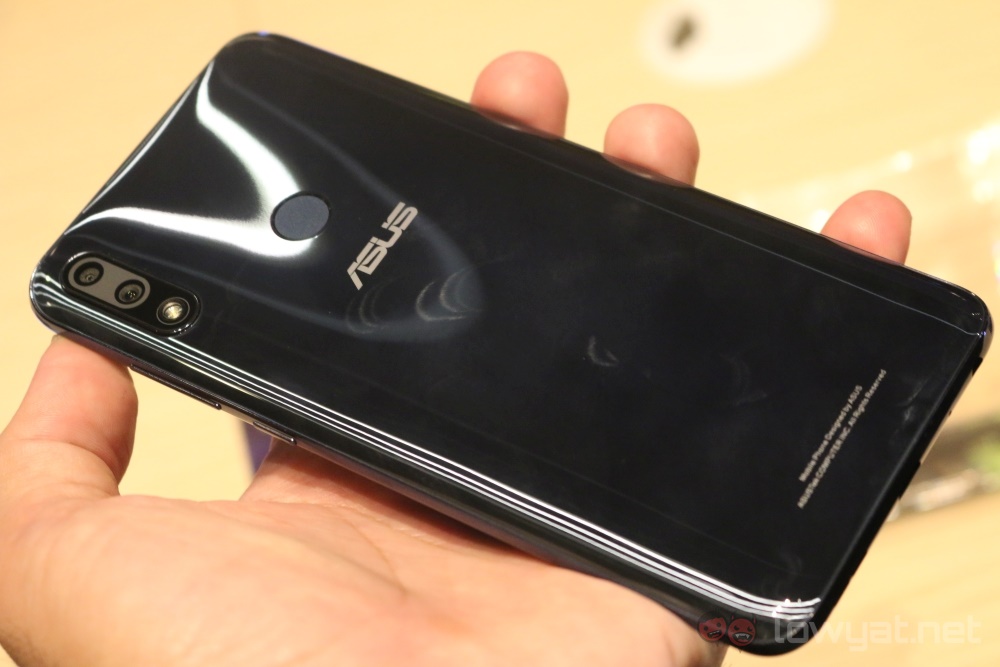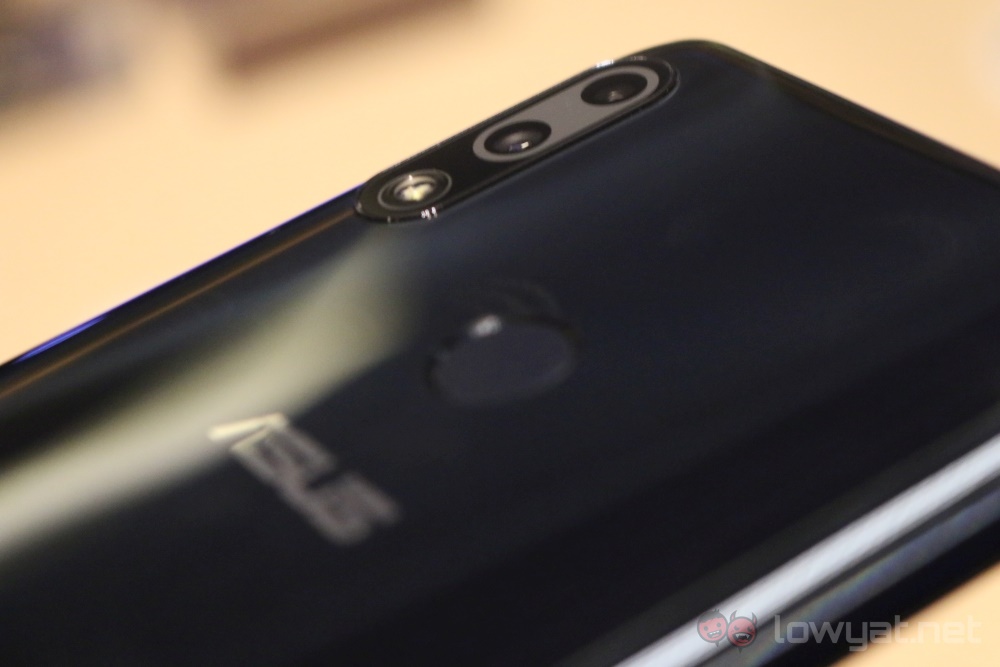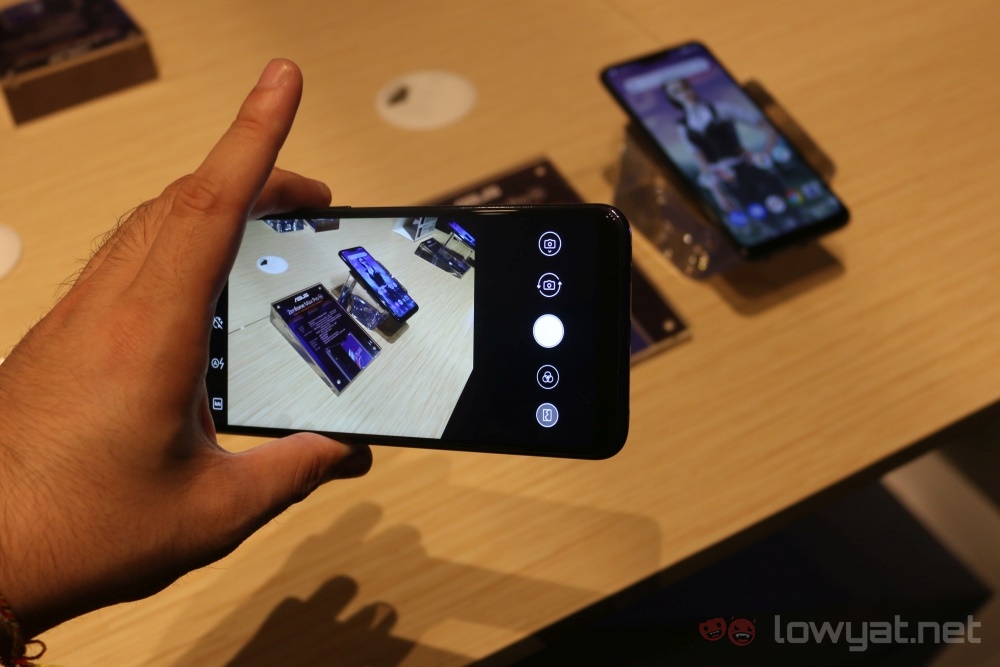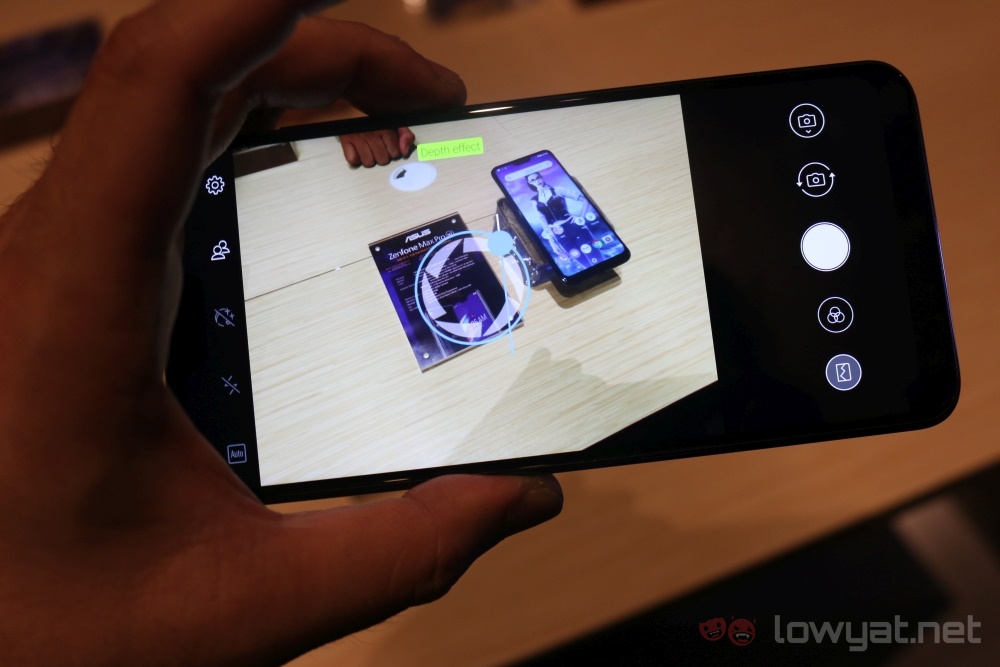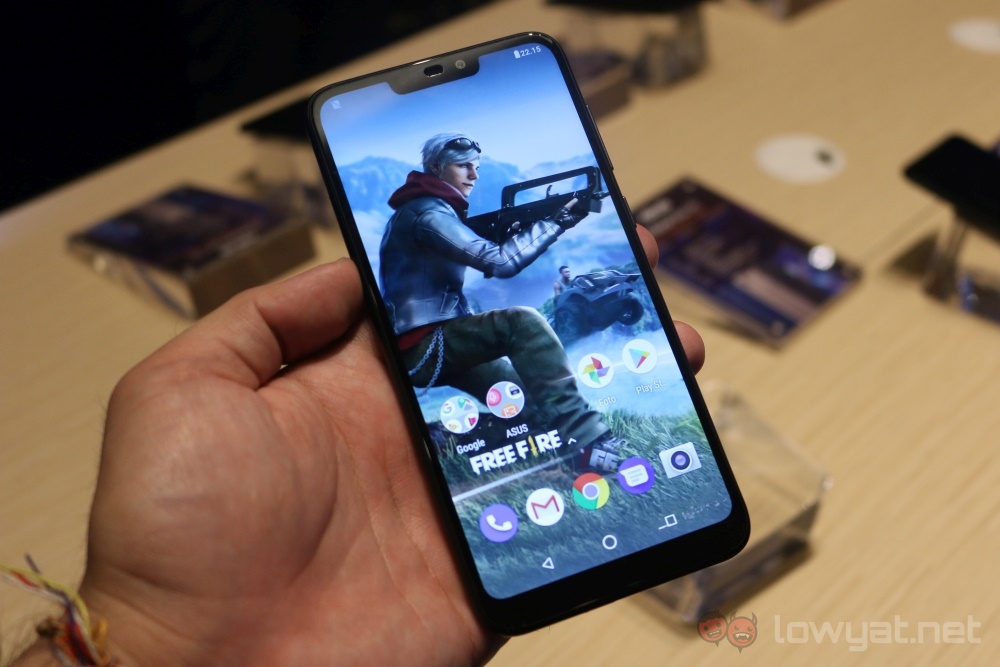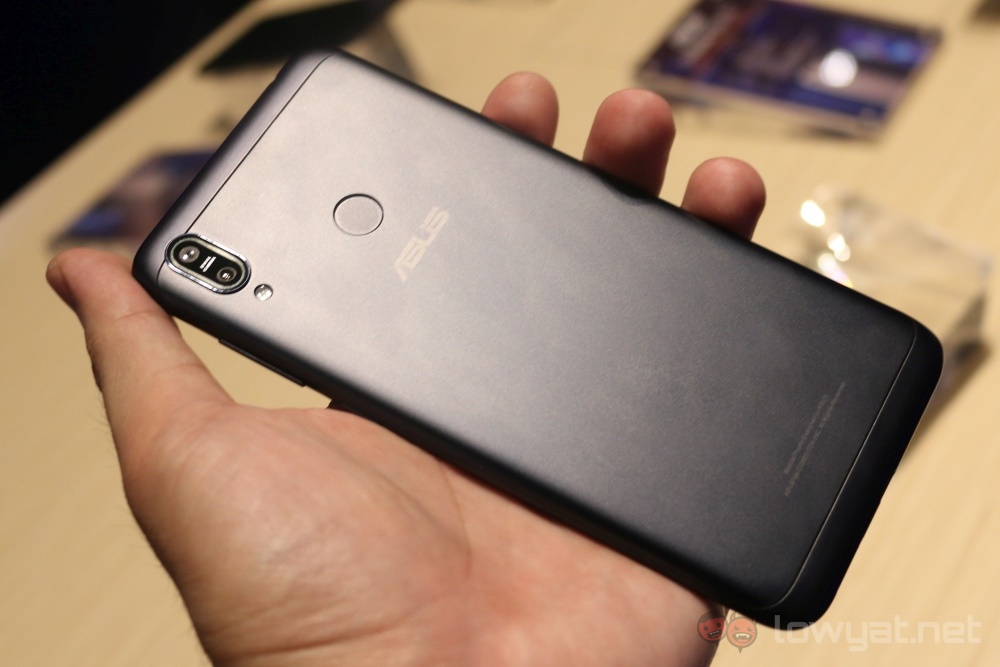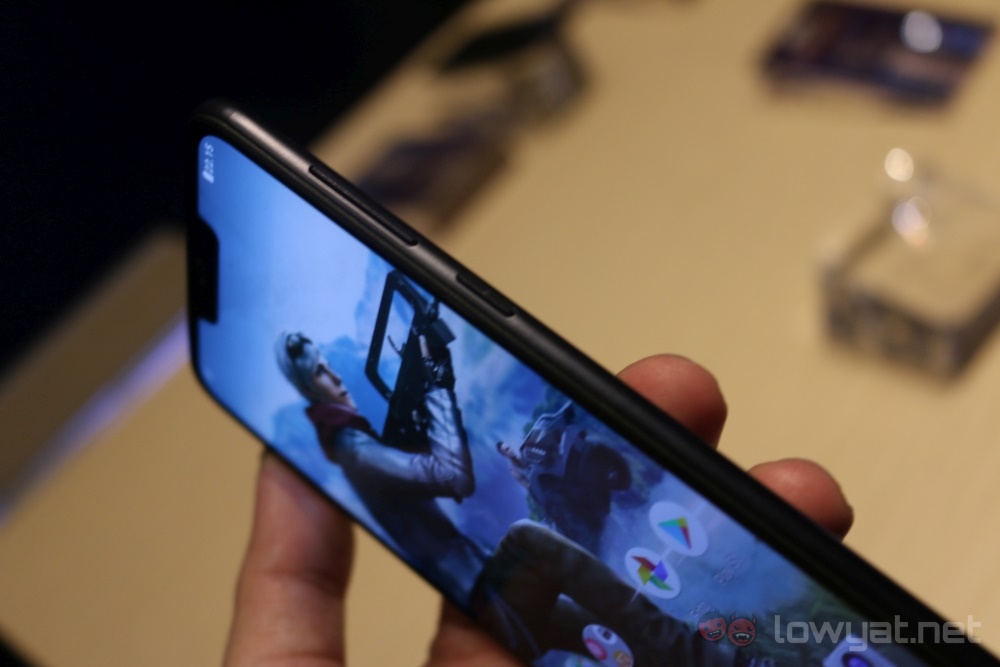We spent some time with it, along with the ZenFone Max M2, to see what the new phones can do.
ASUS ZenFone Max Pro M2
The first thing that’s immediately obvious is that it comes with a notch. It’s a contentious design choice, but it’s one that’s found here nevertheless. The second thing that will be immediately obvious is that it’s pretty hefty. The 5000mAh battery definitely makea its presence known when you pick it up. That said, it is the lightest phone with the 5000mAh battery, weighing in at 175g.
It has all its buttons on the right side, which makes it convenient for the thumb of right handers. At the bottom, you’ll find the Micro USB port, the 3.5mm jack, and the speakers. In your hand, you’ll feel the pretty aggressive chamfers on the front and back. They’re not sharp, but you’ll still feel an angle sticking out when you hold it tight in your hand. The sides themselves are nicely rounded, so it fits snugly in your grip.
Round the back, you’ll find the fingerprint sensor and the dual camera setup. The camera bump is there, and while it’s not really pronounced, it still feels like an accident waiting to happen. Looking at the phone from the back, though, is where it looks its best. While its construction is mainly polycarbonate it comes with a metal-like reflective finish. It’s also quite the change of pace, seeing ASUS use a design that isn’t its signature concentric circle design.
The camera does have a few features worth pointing out. For one, it’s auto mode comes with pretty aggressive white balancing. This is pretty uncommon in smartphones, but may not be a feature you’ll like if you like your ambient lighting. It also comes with its Depth Effect, or bokeh effect as the new trend is better known as. And it’s pretty intuitive – you pick a focus point, and then adjust the level of bokeh as you see fit.
ASUS ZenFone Max M2
Unsurprisingly, the ZenFone Max M2 looks and handles a lot like the ZenFone Max Pro M2. The most obvious difference lies round the back, where you get a solid matte slate instead of a fancy reflective back. The flash is also not part of the camera bump, but unfortunately the bump is still there.
The same thing can be said about the front. The notch is there, for better or worse. The buttons are also all on the right side, and the base is where you’ll find the Micro-USB port and the 3.5mm jack.
Even the camera behaves in a similar manner. There’s the aggressive white balance, and there’s the same Depth Effect mode, but it’s difficult to compare and contrast the quality of the images. The ASUS ZenFone Max Pro M2 is another phone that is competing for a slice of the mid-dange pie. It’s been marketed pretty aggressively as a competitor to the Realme 2 Pro that was released not too long ago, so it will be interesting to see if it stands up to its claims. We would really love to put it through its paces as well, given the opportunity.
